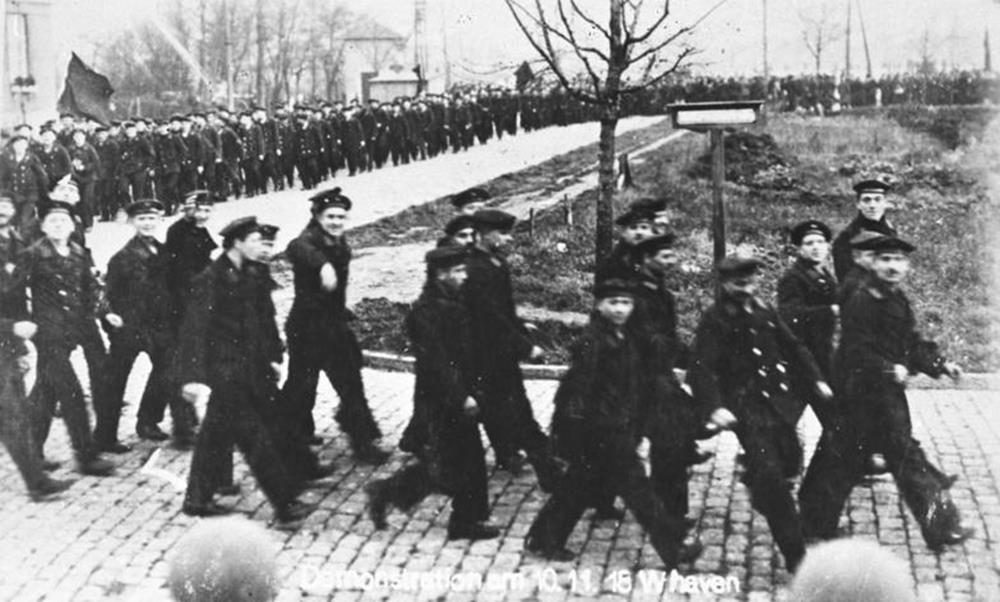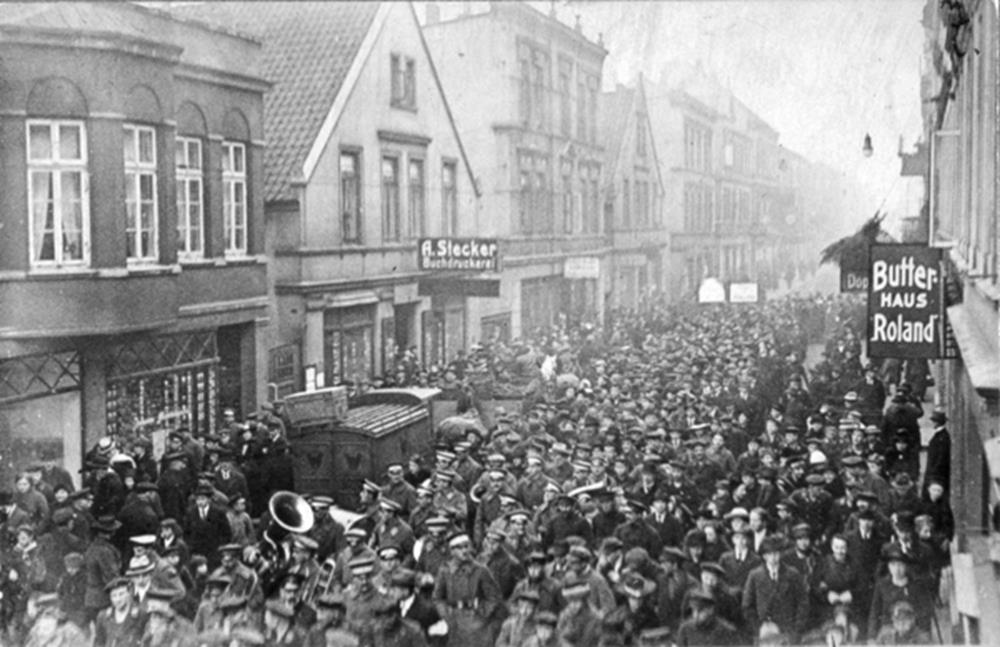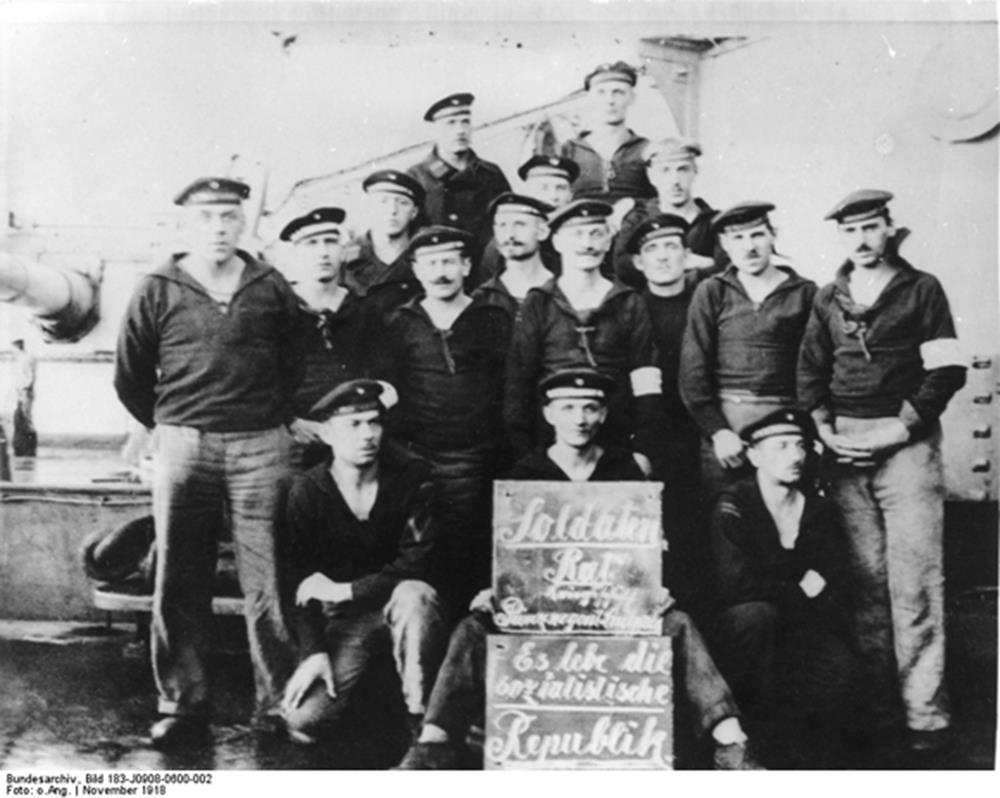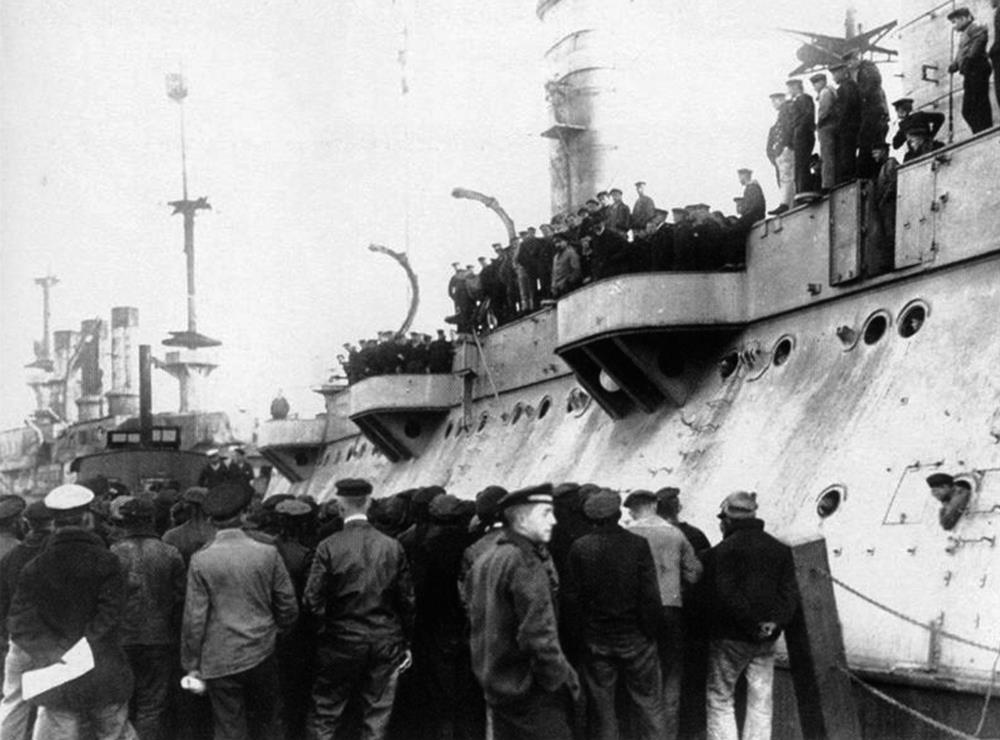24 – Mutiny of the German Navy
While the Germany Army commanders accepted defeat, Admiral Scheer had an intact fleet and wanted one last chance to engage the Royal Navy.
On 22nd October Scheer ordered Admiral Hipper to prepare for an attack on the British fleet, utilizing the entire High Seas Fleet, and the U-boats (which had all been recalled to their home bases as part of the Armistice talks.) Hipper’s plan was approved and on 29th October 1918, the High Seas Fleet assembled off Wilhelmshaven.
On hearing the plan, many of the sailors became convinced their commanders were intent on sacrificing them to sabotage the Armistice negotiations. They refused to raise anchor or failed to return from leave. Mass insubordination occurred on most of the large ships.
Admiral Hipper cancelled the order on 30 October and ordered the fleet to disperse, hoping to quell the insurrection.
However the mutiny gradually spread through the entire navy. At Kiel, what started as a sailors’ mutiny became a people’s revolution modelled on the Russian Revolution of 1917. Sailors’ Councils took control of the warships. Workers councils took over power in cities across Germany.

Sailors demonstrating in Wilhelmshaven, 10th November 1918

Mass demonstrations in Wilhelmshaven, 6 November 1918

Sailors of the SMS Prinzregent Luitpold hold a sign saying: “Soldier’s council, Warship Prinzregent Luitpold. Long live the socialist republic.”

The Social Democrat Gustav Noske addresses mutineers in Kiel, 5 November 1918
| < 23 – 1918 The End of the Land War |
| Δ Index |
| 25 – Signing the Armistice > |
top of page
